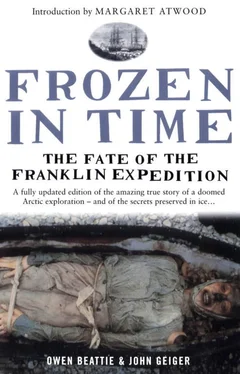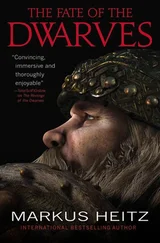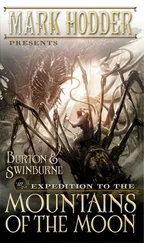But first, Franklin and his 128 men—most of whom were without previous polar experience—had to contend with the approaching twenty-four-hour darkness and bitter cold of the Arctic winter. They would be completely isolated from all other human beings and beyond hope of rescue for many months should something go wrong; then came the deaths of John Torrington, John Hartnell and William Braine.
Speculation as to the cause of death of those three men dominated Owen Beattie’s thoughts, when, on 10 August 1984, he and a scientific team consisting of pathologist Dr. Roger Amy and research assistants Walt Kowal, Joelee Nungaq and Geraldine Ruszala lifted off in their Twin Otter from Resolute and turned eastward for the flight across the choppy waters of Wellington Channel to Beechey Island. As the aircraft approached the distant cliffs of their destination and nearby Devon Island, there was little to provide a sense of scale. But as the plane descended, rounding the northern spit of Beechey Island, then closed in on the sloping area of Franklin’s winter camp, Beattie was astonished at how insignificant the islet looked alongside massive Devon Island.
Beattie had never visited the historic site before and, peering out of the window as the plane passed by the graves about 100 feet (30 metres) above the ground, he was deeply moved by the site’s vulnerability. Along the whole eastern slope of the island, the headboards of John Torrington, John Hartnell and William Braine were the tallest features visible, framed by towering, vertical cliffs to the west and the shore of Erebus Bay to the east.
Adjacent to the graves was a landing area, scored by long parallel wheel marks in the gravel where other planes had landed, some perhaps earlier that summer, others many years before. The pilot, flying by the graves, checked out the makeshift landing strip and the wind direction. He then powered the Twin Otter up and out over Erebus Bay, turned sharply towards the cliffs and, pulling out of the turn, lined up with the landing area. Skimming only a foot or two over mounds of gravel, the plane, flaps now fully extended, was committed to a short field-landing. With the graves directly off the left wing, the main wheels touched down into the gravel. Immediately the pilot brought the nose wheel down, applied the brakes and reversed thrust on the propellers. The plane came abruptly to a full stop.
After half an hour spent unloading a huge pile of supplies, the team stood back and watched the plane lift off and fly out over Union Bay, then into the distance, the droning of the engine gradually replaced by quiet. For the first few minutes, the crew strolled around the site. They were struck by the absolute isolation. Apart from the Antarctic and perhaps a handful of other places, there is nowhere in the world where a person can face solitude as in the Canadian Arctic. Even the presence of a few workmates does not compensate for the emptiness and loneliness of the far north.
The first task was to construct a temporary home, much as Franklin’s men had done here many years earlier. Everyone helped to pitch two large communal tents, and, as soon as these were ready, five sleeping tents were set up. Two large long-house tents, measuring 12 by 18 feet (3.7 by 5.5 metres), would provide much-needed living space for a crew whose sleeping tents were large enough only for a sleeping bag and backpack. Each long-house tent had a strong tubular aluminium skeleton, covered by a canvas outer skin; another canvas cover was tied on the inside. These two layers would provide excellent protection from the wind, rain and snow. A heavy canvas floor covered the sharp gravel. The door consisted of a double flap that could be tied tightly shut. When the tents were in position, the radio aerial and a weather station were assembled and raised.
Beattie spent time that first day on Beechey Island studying the tiny Franklin graveyard where he hoped some answers lay buried. The three graves lay side by side, about 26 feet (8 metres) above sea level. He planned to begin by exhuming Petty Officer John Torrington, who was probably the first on the expedition to die. Interred alongside Torrington were Able-bodied Seaman John Hartnell and Private William Braine.
Torrington’s headboard was simple, but both Hartnell and Braine had inscriptions taken from the Bible carved on theirs. Hartnell’s included the following passage: “Thus saith the Lord of Hosts, consider your ways.” Haggai, i,7.’, while Braine’s read, “Choose ye this day whom ye will serve” Joshua, xxiv, 15.’ These unusual inscriptions have prompted some searchers and historians to suggest that foul play or mishap marred that first winter. One of the jobs of a forensic anthropologist is to interpret whether foul play could have caused or contributed to the death of an individual. Before the work started on Torrington’s grave, Beattie wondered what he might find.
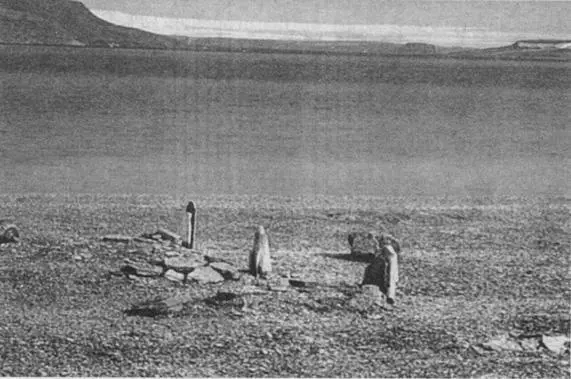
The Beechey Island gravesite: The graves, from right to left, are of Thomas Morgan of the Investigator (d. 1853); and from the Franklin expedition, Private William Braine RM (d. 3 April 1846), Able Seaman John Hartnell (d. 4 January 1846), Petty Officer John Torrington (d. 1 January 1846); and a fifth, unidentified grave.
Two days after the first members of Beattie’s scientific team arrived, a second Twin Otter flew in carrying project archaeologist Eric Damkjar and research assistant Arne Carlson. Damkjar brought news of a family emergency to Nungaq, and the young assistant left on the same aircraft.
Torrington’s grave was carefully staked out, mapped, sketched and photographed so it could be restored to its original state upon completion of the exhumation. Each stone covering the grave, from the tiny 2–4-inch-high (5–10-cm-high) stone fence made of limestone shingle that surrounded it to the stones that covered the burial mound itself, were numbered with water-soluble ink to assist the scientists in reconstruction.
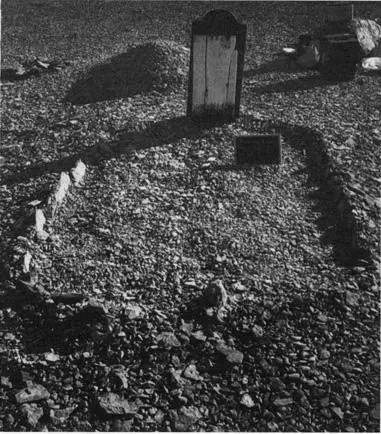
The grave of 20-year-old John Torrington after the removal of the gravel mound. Notice the row of small limestone shingles that form a fence-like feature around the grave.
They worked surrounded by the permanence of the stark and seemingly ancient land. But for the lonesome graves, a few remaining Franklin relics and their own small cluster of tents, there was nothing human in the place. The hard, angular coastline of Devon Island juts out in the distance east of Beechey Island, with cliffs rising some 660 or more feet (200-plus metres) out of Lancaster Sound and Barrow Strait. When the land is covered with snow, the stratigraphy of the cliffs produces marked horizontal stripes of white and grey that appear like a chart of the ages. Beechey Island itself is actually a very small appendage to the southwest corner of Devon Island, to which it is connected by a narrow filament of gravel barely 13 feet (4 metres) across in parts and within the reach of windblown ice. It was first seen by Europeans on a cold August day in 1819. Captain William Edward Parry briefly described landing on Devon Island:
The first party landed at the foot of a bluff headland, which forms the eastern point of this bay, and which I named after my friend MR RICHARD RILEY, of the Admiralty.
(It was on that point of land, Cape Riley, that searchers would find the first traces of the Franklin expedition thirty-one years later.) Then Parry looked to the west, across a bay that now bears the name of Franklin’s ship, Erebus, at what would eventually become one of the most important and recognized sites in Arctic exploration:
Читать дальше
